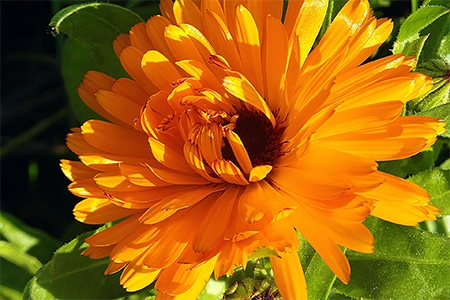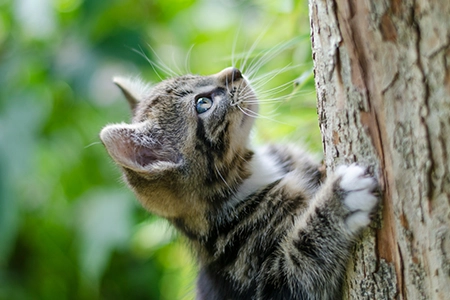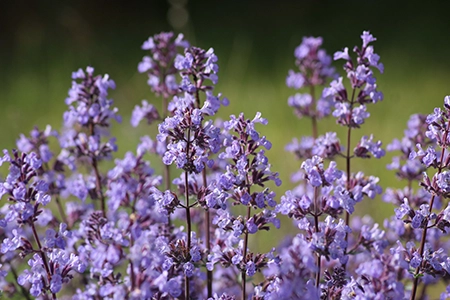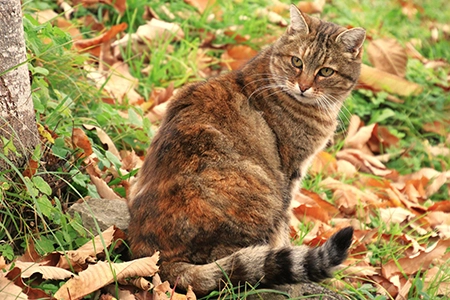Introduction
For responsible cat owners, cultivating a garden that seamlessly blends beauty with safety is crucial. Our feline companions, with their curious nature, explore outdoor spaces, emphasising the need to create an environment that captivates the human eye while ensuring the well-being of cherished pets and avoiding plants poisonous to cats.
Ideally, a garden should be a harmonious space where cat-friendly plant choices enhance aesthetics, recognising and avoiding toxic plants to foster a haven where both plants and pets coexist in a symbiotic relationship, contributing to the overall beauty and tranquillity of the outdoor oasis.
Aligning the specific needs of cats with thoughtful botanical choices is a commitment to creating an environment where they can roam freely and revel in the sensory delights of a well-curated garden, transforming it into a sanctuary where lush greenery and vibrant blooms coalesce with the playful presence of contented cats.
The Importance of Knowing Cat-Friendly Plants
The joy of cat companionship is unparalleled, and with it comes the responsibility of creating a safe haven in your garden for these curious and playful creatures. Cats, by their very nature, are inquisitive explorers, and their inclination to nibble on plants adds an extra layer of consideration for pet owners. Being mindful of the botanical choices and steering clear of plants poisonous to cats in your garden becomes crucial.
Unlike dogs, which are primarily carnivores, cats are obligate carnivores, meaning they have a biological need for a diet that includes meat. However, their curiosity often extends to sampling plants, and there are quite often plants poisonous to cats that some people are unaware of. Some plants may cause mild stomach discomfort, while others can lead to severe toxicity and, in extreme cases, be fatal.
Understanding which plants are cat-friendly and which should be avoided is a vital aspect of responsible pet ownership. This knowledge empowers cat owners to curate a garden that not only adds visual appeal to their outdoor space but also provides a secure environment for their beloved feline companions. It’s a commitment to fostering an environment where cats can roam freely, indulge their curiosity, and partake in the sensory pleasures of a well-tended garden without compromising their health and safety.
Consequences of Poisonous Plants
The consequences of having plants poisonous to cats can indeed be severe, ranging from mild discomfort to life-threatening situations. Cats, in their exploratory nature, may come into contact with plants that, when ingested, lead to various adverse effects on their health.
For cats exposed to toxic plants, the symptoms can manifest in different ways. Mild cases may result in symptoms like vomiting and diarrhoea, causing temporary discomfort and distress. However, more severe toxicity can lead to lethargy, seizures, and, in the worst scenarios, fatal outcomes.
Creating a cat-friendly garden goes beyond merely selecting non-toxic plants; it involves being acutely aware of the potential dangers that certain greenery may pose. Being informed about the plants that are harmful to cats and ensuring they are kept out of reach is a proactive step toward safeguarding your feline companions.
By eliminating plants poisonous to cats from your garden and introducing cat-friendly alternatives, you not only enhance the visual appeal of your outdoor space but also prioritise the well-being and safety of your cherished pets.
Signs of Plant Toxicity in Cats
Recognising the symptoms of plant toxicity in cats is crucial for prompt intervention and treatment. While the signs can vary depending on the plant species and the amount ingested or contacted, there are common symptoms to watch for:
Gastrointestinal Issues
Cats may experience vomiting, diarrhoea, drooling, or abdominal pain shortly after ingesting a toxic plant. These symptoms can range from mild to severe, depending on the toxicity of the plant and the amount consumed.
Oral Irritation
Plants with irritating sap or thorns can cause oral discomfort or irritation in cats. Signs may include pawing at the mouth, excessive drooling, or reluctance to eat or drink.
Lethargy and Weakness
Some toxic plants can affect a cat’s central nervous system, leading to weakness, lethargy, or depression. Affected cats may appear uncoordinated or disoriented.
Respiratory Distress
Certain plants can cause respiratory symptoms in cats, such as difficulty breathing, coughing, or wheezing. This can occur if a cat inhales airborne toxins or comes into contact with irritating plant particles.
Skin Irritation
Contact with toxic plants can result in skin irritation or allergic reactions in cats. Signs may include redness, itching, swelling, or hives on the skin, particularly in areas that have come into direct contact with the plant.
Changes in Heart Rate or Blood Pressure
Ingestion of certain toxic plants can affect a cat’s cardiovascular system, leading to changes in heart rate or blood pressure. These symptoms may manifest as rapid heartbeat, weakness, or collapse.
Seizures or Neurological Signs
In severe cases of plant toxicity, cats may experience seizures, tremors, or other neurological abnormalities. These symptoms indicate significant toxicity and require immediate veterinary attention.
It’s essential to monitor cats closely if they have access to plants both indoors and outdoors and to seek veterinary care promptly if any signs of plant toxicity are observed. Providing your veterinarian with information about the suspected plant exposure can aid in accurate diagnosis and treatment.
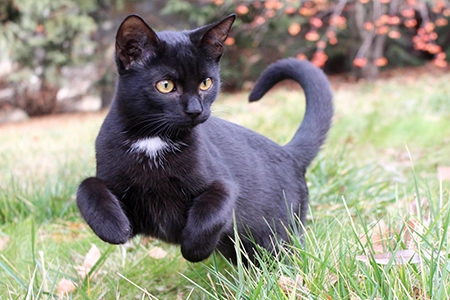
Plants Causing Stomach Grips (Non-Fatal)
While these plants are non-fatal, it’s essential for cat owners to be aware of their presence in the garden and take steps to ensure that cats have alternatives that align with their natural instincts and preferences. Let’s explore five outdoor plants that may induce stomach grips in cats, providing insights into their appearance and characteristics.
Spider Plant (Chlorophytum Comosum)
Spider plants are popular indoor houseplants known for their arching leaves adorned with green edges and distinctive white stripes. In addition to their appealing aesthetics, these plants often produce baby plantlets, or “spiderettes,” on long, drooping stems. While spider plants are generally considered non-toxic to cats, caution should be exercised as ingestion in small amounts may lead to mild stomach upset. It’s advisable to keep these plants out of reach or consider feline-friendly alternatives.
Areca Palm (Dypsis Lutescens)
Areca palms, characterised by their graceful, feathery fronds arranged symmetrically on slender stems, add a touch of tropical elegance to indoor spaces. Although these palms are generally non-toxic to cats, ingestion may result in mild stomach discomfort. Cat owners should monitor their pets around these plants and ensure that any symptoms of discomfort are promptly addressed.
African Violet (Saintpaulia)
African violets are charming, low-growing plants featuring fuzzy leaves and vibrant flowers in various colours. Generally considered non-toxic, African violets pose minimal risk to cats. However, cautious observation is recommended, as ingestion might lead to mild gastrointestinal upset which is why this particular specimen has made it on our list of plants poisonous to cats. Providing a mix of cat-friendly plants and carefully monitoring their interactions with other flora can contribute to a safer indoor environment.
Bamboo Palm (Chamaedorea Seifrizii)
Bamboo palms, with their clusters of slender, bamboo-like stems and feathery, green fronds, are popular choices for adding a touch of greenery to homes. While generally non-toxic, consuming small amounts of bamboo palm may cause mild digestive issues in cats. Cat owners should prioritise their pets’ well-being by offering alternatives that pose minimal risks and consulting with veterinarians if concerns arise.
Blue Echeveria (Echeveria Glauca)
Blue echeverias, known for their rosette-shaped succulent form and plump, blue-green leaves, are aesthetically pleasing additions to indoor gardens. Although ingestion is generally non-fatal, it may lead to minor digestive discomfort in cats. Responsible pet ownership involves awareness of potential risks and making informed choices to create a safe and enjoyable environment for both feline companions and plant life.
Highly Toxic Plants to Cats
As responsible cat owners, recognising and avoiding highly toxic plants is paramount to creating a safe and nurturing environment for our feline companions. This section delves into five outdoor plants that pose a severe threat to cats, potentially causing fatal consequences if ingested.
Understanding the appearance and characteristics of these toxic plants is crucial for safeguarding our cats’ well-being and promoting a garden where both plants and pets can thrive harmoniously.
Lily (Lilium)
Elegance embodied in trumpet-shaped blooms, lilies are a captivating addition to gardens, but their charm belies a severe threat to feline companions. Highly toxic to cats, lilies, including both Lilium and Hemerocallis species, can lead to kidney failure and, tragically, death. Even minute exposures, such as ingestion of pollen or drinking water from a vase containing lilies, can have devastating consequences. Swift action is crucial in seeking veterinary attention if a cat has encountered any part of a lily plant.
Autumn Crocus (Colchicum Autumnale)
The allure of autumn crocus lies in its vibrant, crocus-like blooms that grace gardens with seasonal charm. However, beneath its visual appeal hides a perilous threat to cats. Classified as extremely toxic, ingestion of any part of the autumn crocus can lead to organ failure and, tragically, death. Vigilance in identifying these plants and immediate intervention in case of accidental exposure are paramount for the well-being of feline friends.
Azalea (Rhododendron)
Azaleas, with their vibrant, trumpet-shaped flowers, are popular choices in gardens, but their enticing appearance masks a highly toxic nature for cats. Ingestion of any part of the azalea plant can cause severe digestive issues and, in severe cases, potential fatality. Cat owners must exercise caution, recognising the distinct characteristics of azaleas and opting for cat-friendly alternatives to adorn their outdoor spaces.
Sago Palm (Cycas Revoluta)
The sago palm, with its low-growing stature and feather-like leaves, may be an appealing addition to landscapes, but it harbours toxins that can be fatal to cats. Ingestion of any part of the sago palm can result in severe health consequences, which is why this particular specimen has made it on our list of plants poisonous to cats. Cat owners should prioritise the safety of their feline companions by steering clear of these plants and opting for non-toxic alternatives in their outdoor spaces.
Oleander (Nerium Oleander)
With its evergreen allure and showy, fragrant flowers, oleander may seem like an ornamental delight, but its presence poses grave dangers to cats, which is why this particular specimen has made it on our list of plants poisonous to cats.. This shrub harbours high toxicity, causing severe gastrointestinal issues and, in extreme cases, potential fatality. Recognising the distinctive, leathery leaves and colourful clusters of flowers is vital for cat owners to ensure these plants are kept well out of reach, creating a safe environment for their feline companions.
Cat-Loving Alternatives
In this section, we’ll explore a selection of cat-loving alternatives that not only thrive in similar growing conditions but also captivate our curious companions with their textures, scents, and visual appeal. These substitutes not only provide a safe and enjoyable environment for cats but also enhance the overall charm of your garden sanctuary, aiding you in avoiding plants poisonous to cats.
Cat Grass (Dactylis Glomerata)
For cats with a penchant for nibbling, cat grass offers a safe and enjoyable outlet. Featuring dense clumps of grass-like foliage, cat grass provides a source of entertainment and aids in digestion. Its presence in the garden or as an indoor offering allows cats to indulge in their natural behaviour of chewing on grass without any harmful consequences.
Valerian (Valeriana Officinalis)
Valerian, an herb with clusters of small, fragrant flowers, might be better known for its calming effects on humans, but it also has a playful side for cats. The compound actinidine found in valerian can trigger a lively and joyful response in cats, making it a safe and enjoyable option for feline-friendly gardens.
Lemon Balm (Melissa Officinalis)
Fragrant and visually appealing, lemon balm is a herb with lemon-scented leaves that elicit a calming effect on cats. As cats often respond positively to the scent of lemon balm, incorporating this herb into your garden provides a serene atmosphere for both you and your feline companions.
Calendula (Calendula Officinalis)
Bright and cheerful, calendula flowers add a burst of colour to gardens while remaining safe and non-toxic for cats. With a variety of colours available, including vibrant oranges and yellows, calendula not only pleases the eye but also provides a visually appealing and feline-friendly alternative to toxic plants.
Catnip (Nepeta Cataria)
An aromatic herb with jagged, heart-shaped leaves, catnip is the epitome of feline fascination. What makes cats go wild for this plant is the compound nepetalactone found in its leaves, which induces a euphoric response in many cats. Safe for cats to interact with, catnip can be an excellent addition to gardens or provided as a treat, creating moments of playful joy for your feline friends.
NGS Expertise
NGS is your partner in cultivating a space where your feline companions can thrive. Our knowledgeable horticulturists are well-versed in the intricacies of cat-friendly gardening, ensuring that your garden is a haven of safety and enjoyment for your pets.
When you choose NGS, you gain access to a wealth of information on plants that enhance your garden’s beauty without compromising your cats’ health. We offer insights into cat-friendly alternatives for potentially toxic plants, helping you make informed choices to create a vibrant and secure outdoor space.
Moreover, our team provides guidance on designing interactive elements, like cat-friendly plants and designated areas for play. Whether it’s incorporating safe herbs for your cats to nibble on or creating cosy corners for them to relax, NGS tailors advice to suit your garden’s unique characteristics and your pets’ preferences.
Embrace the joy of gardening alongside your feline friends with the assurance that NGS brings. We are committed to fostering a green haven that not only captivates your senses but also ensures the well-being of your beloved cats. Choose NGS for a garden that blooms with beauty and safety, creating a perfect retreat for both you and your pets. Visit our Contact Us page for more information!
Conclusion
In conclusion, as we tread the path of responsible cat ownership, the significance of crafting a garden that balances beauty and safety becomes undeniably clear. Our feline companions, with their inquisitive spirits, deserve an outdoor haven that not only captivates the human senses but also safeguards their well-being.
Nurturing a cat-friendly garden goes beyond aesthetics; it’s a commitment to providing a sanctuary where lush greenery and vibrant blooms harmonise with the playful presence of contented cats. By selecting cat-loving alternatives and steering clear of poisonous plants, we transform our gardens into spaces that enrich both our lives and those of our beloved pets.
The conscious choices we make echo in the tranquillity of our outdoor oasis, where the delicate dance between plants and feline explorers creates an environment of joy, safety, and shared delight. As stewards of these living landscapes, we embark on a journey that intertwines the beauty of nature with the well-being of our cherished cats, fostering a sanctuary that blossoms with life and love.


